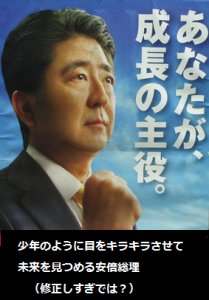 (1961年)8月6日の「ヒロシマ・デー」に,百人委員会は2つの集会を開く準備をした。(午前中は)ロンドンの官庁街ホワイトホールにある大戦戦没者記念碑(注:両大戦が対象)に花輪を献げる儀式であり,午後はマーブル・アーチ(Marble Arch: ヴィクトリア女王を記念した大理石の門)で行なわれる演説会であった。前者は厳粛に行われた。我々は広島の原爆(投下)の状況を,一般の人々に,思い起こさせたいと願った。我々はまた英国人の戦没者を追悼すること(注:commemorate 記念する;しのぶ,思い出す)によって,彼らの死を無駄にさせないことが現在生きている者の責務であるということに,一般の注意を喚起できるかもしれないと考えた。我々は午後の演説においてこの見解を支持したいと思った。けれども,(英国人の)多くの人々にとっては,広島や長崎原爆で亡くなった者と第二次犬戦で日本人と戦って亡くなった者とをひとまとめにとり扱うことは冒涜的行為であった。これと同じ考えをもつ人々の多くが,(独立戦争で英国と戦った)ワシントン将軍や(第二次ボーア戦争のとき英国と戦った)スマッツ将軍の銅像が社会的栄誉(公的栄誉)の場所を与えられることに対して反対するかどうかは疑問である。
(1961年)8月6日の「ヒロシマ・デー」に,百人委員会は2つの集会を開く準備をした。(午前中は)ロンドンの官庁街ホワイトホールにある大戦戦没者記念碑(注:両大戦が対象)に花輪を献げる儀式であり,午後はマーブル・アーチ(Marble Arch: ヴィクトリア女王を記念した大理石の門)で行なわれる演説会であった。前者は厳粛に行われた。我々は広島の原爆(投下)の状況を,一般の人々に,思い起こさせたいと願った。我々はまた英国人の戦没者を追悼すること(注:commemorate 記念する;しのぶ,思い出す)によって,彼らの死を無駄にさせないことが現在生きている者の責務であるということに,一般の注意を喚起できるかもしれないと考えた。我々は午後の演説においてこの見解を支持したいと思った。けれども,(英国人の)多くの人々にとっては,広島や長崎原爆で亡くなった者と第二次犬戦で日本人と戦って亡くなった者とをひとまとめにとり扱うことは冒涜的行為であった。これと同じ考えをもつ人々の多くが,(独立戦争で英国と戦った)ワシントン将軍や(第二次ボーア戦争のとき英国と戦った)スマッツ将軍の銅像が社会的栄誉(公的栄誉)の場所を与えられることに対して反対するかどうかは疑問である。
(写真は、市中に氾濫している自民党のポスターの1枚:「一億総活躍社会」の宣伝 目がキラキラしているのが嘘っぽい)
On August 6th, ‘Hiroshima Day‘, the Committee of 100 arranged to have two meetings: a ceremony in the meeting of laying a wreath upon the Cenotaph in Whitehall and, in the afternoon, a meeting for speeches to be made at Marble Arch. The former was carried out with dignity. We wished to remind people of the circumstances of the nuclear bomb at Hiroshima. We also thought that, in commemorating the British dead, we might call attention to the fact that it was up to the living to prevent their deaths from going for nothing. We hoped in the afternoon’s speeches to support this point of view. To many people, however, to bracket the deaths at Hiroshima and Nagasaki with the deaths of those who fought the Japanese in the Second War was blasphemous. It is doubtful if many of these same people object to the statue of General Washington or of General Smuts being given places of public honour.
出典: The Autobiography of Bertrand Russell, v.3, chap. 3:Trafalgar Square, 1969]
詳細情報:http://russell-j.com/beginner/AB33-210.HTM
[寸言]
自分(自国)がやられた場合はいつまでも根に持つが、自分(自国)がやったことはすぐに忘れ、相手(相手国)にはいつまでも根に持たず「未来に目を向けるべきだ」と平気で言う身勝手さ。それが人間性だと開き直るのも人間性!?
